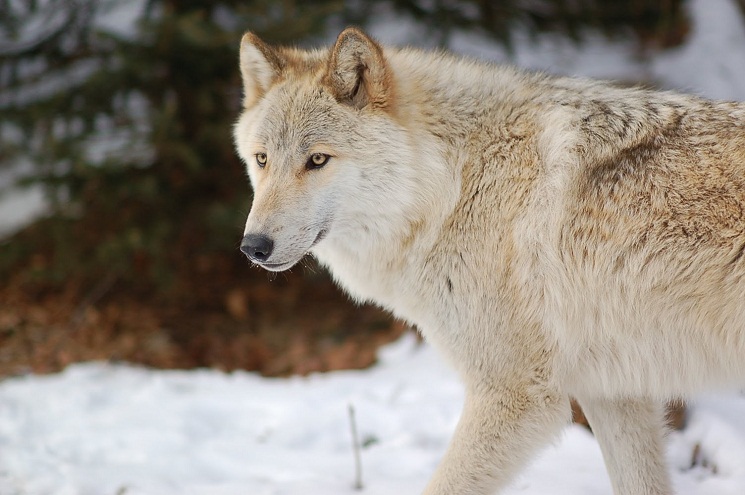
These wolves live in incredibly cold climates, so they rarely encounter people. You may think of a wolf as a solitary animal, but Arctic wolves travel in packs of six or so. The fastest recorded speed of an Arctic wolf is 46 mph. Arctic wolves run while hunting muskoxen or other prey. Plus, these pads give them traction on the slippery surfaces they walk and run on. The waterproof layer of fur helps this wolf to stay dry and maintain its body heat in subzero temperatures.Īlong with their insulated fur coats, Arctic wolves have paws with thick pads allowing them to walk on frozen ground.
Arctic wolf habitat skin#
The layer of fur closest to the wolf’s skin is waterproof.

The upper layer gets thicker as the temperature drops in the tundra. The white or sometimes grayish coat of this wolf has two layers. An Arctic wolf’s body is about three quarters as long as that tree. They range between 2 to 3 feet tall and can be up to 5 feet long including their tail. A 70-pound wolf is equal to the weight of 4 adult Dachshunds. Arctic Wolf Appearance and BehaviorĪn adult Arctic wolf can weigh between 70 and 125 pounds. The Arctic wolf doesn’t have a subspecies, but it is a close relative of the grey wolf. The word Arctos refers to a polar region. Its scientific name Canis means dog while lupus means wolf. It belongs to the Canidae family and its class is Mammalia. Its scientific name is Canis Lupus Arctos. Arctic Wolf Scientific NameĪrctic wolf is the common name of this mammal though it’s sometimes called a polar or white wolf. You can read more incredible facts about the Arctic wolf.




 0 kommentar(er)
0 kommentar(er)
